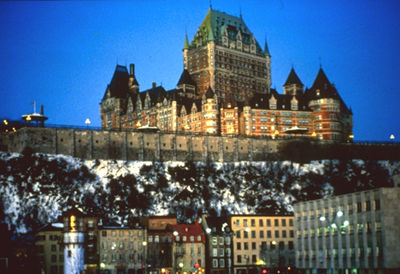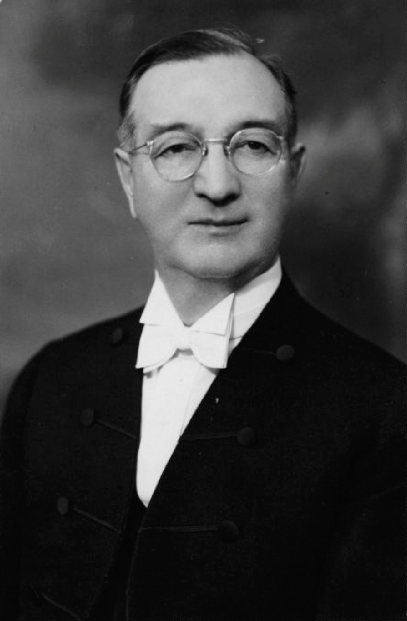
From L’Électeur to Le Soleil
Ernest Pacaud, a prothonotary from Trois-Rivières and a close friend of Laurier’s, was the editor-in-chief of L’Électeur during its first 20 years. He is also considered to be its true founder. In 1888, Louis Fréchette and Arthur Buies became regular contributors to the newspaper. L’Électeur, which was considered progressive and nonconforming in a sea of ultramontane journalism, was the quasi-official voice of the Liberal Party and the Québec Liberal Party. It incited outrage from the Catholic Church in French Canada by supporting Wilfrid Laurier on the Manitoba schools question and by explicitly campaigning against the Conservatives during the Election of 1896. After Laurier won the election, L’Électeur rubbed it in by publishing sections from Laurent-Olivier David’s lampoon Le clergé canadien: sa mission, son œuvre, in which value was placed on the study of modern languages (instead of Greek and Latin) and the fundamentals of the scientific method. In response, five bishops published a pastoral letter banning L’Électeur, andthe editorial board called an emergency meeting in Québec City, scrapping the paper and immediately creating a new one — with an identical editorial policy — which they called Le Soleil.

The name Le Soleil was adopted on 28 December 1896. Legend has it that the idea for the name came to Laurent-Olivier David during the meeting, as the winter sunlight burst through the windows of the Château Frontenac. However, a number of daily and weekly newspapers in Canada and the United States were already called The Sun, and a moderate liberal monarchist newspaper in Paris was also called Le Soleil.
Cutting Liberal Ties
In 1936, Henri Gagnon, chief executive officer of Publication Le Soleil Limité, appeared before the Public Accounts Committee, presided over by Maurice Duplessis. The collusion between Le Soleil and Louis-Alexandre Taschereau’s Liberal provincial government had gotten out of control. The newspaper’s board of directors included Georges Parent (the son and heir of former Liberal premier Simon-Napoléon Parent, who had owned Le Soleil), Edmond Taschereau, the premier’s brother, and Paul Taschereau, the premier’s son. Publication Le Soleil Limité also published the Gazette officielle du Québec, the minutes from the Legislative Assembly, and the forms for the provincial worker’s compensation board. Jacob Nicol, a majority shareholder (and beneficial owner) of Le Soleil, was head of government in the Legislative Council and minister without portfolio in Taschereau’s Cabinet. This collusive scheme failed to survive the Public Accounts scandal: Maurice Duplessis was elected premier in 1936, causing Le Soleil to abandon their semi-official Liberal stance and adopt a policy of “reporting only news.” However, the newspaper’s major editorials maintained a Liberal tone until 1957.
Circulation and Evolution
The newspaper’s daily circulation was 3,000 in 1881, 22,000 in 1907, 49,000 in 1932, 160,000 in 1971, 122,500 in 1985 and 272,000 in 2014. At one time a national newspaper with reporters all across Canada, Le Soleil suffered from intense local competition and became a regional newspaper of fluctuating quality, inspired by American-style sensationalism. Its main focus is on the political, economic and social life of Québec City. It contains primarily editorial content focusing on current events, book excerpts, and many illustrations and advertisements. Over time, its layout became more attractive and spacious, and specialized sections were added, including columns, women’s interest, sports, children’s corner and letters to the editor.
The union of journalists from Le Soleil and its subsidiary, L’Événement-Journal, was founded by Françoise Côté, the first female francophone journalist appointed to corporate affairs. Its unionized workers threatened to strike, and the newspaper was sold in 1973. A major year-long strike from 1977 to 1978 caused circulation to decrease by 30%. Another three-month strike in 1992 had a lesser impact.
As a company whose profitability is tied to growth in advertising revenues, Le Soleilhas always responded quickly to technological change. It was the first Québec newspaper to make the switch from type metal to photocomposition in the 1960s. In 1984, it became a morning newspaper and began publishing a special tabloid sports section on Sundays. In 2006, it adopted a more compact format to better compete with local tabloid Le Journal de Québec. In 2015, it launched its own mobile app.
Le Soleil’s Media Empires
In 1936, Le Soleil expanded for the first time by purchasing L’Événement. Two years later, it purchased Le Journal,and combined it with L’Événementto create L’Événement-Journal(which ceased production in 1967). In 1946, a special section was created in Le Soleil for Saguenay-Lac-Saint-Jean. In 1959, another section was created for Bas-Saint-Laurent, and that same year the Saguenay-Lac-Saint-Jean section turned into a special regional edition, later named Le Soleil du Saguenay-Lac-Saint-Jean in 1970.

In 1973, under difficult circumstances, the newspaper was bought by Unimédia. Paul Desmarais’s Power Corporation had been in the running to acquire it, but Robert Bourassa’s government was concerned about concentrating too much print media into a single company and prevented the corporation from doing so. A similar situation occurred in 1987, when Unimédia dropped the newspaper: under pressure from Bourassa’s government, Hollinger, a subsidiary of Argus Corporation, made the successful bid. In 2000, Le Soleil was sold to Gesca, a subsidiary of Power Corporation. It changed hands again in 2015 when it was bought by Groupe Capitales Médias, run by Martin Cauchon, one of Jean Chrétien’s former Liberal ministers.

 Share on Facebook
Share on Facebook Share on X
Share on X Share by Email
Share by Email Share on Google Classroom
Share on Google Classroom






